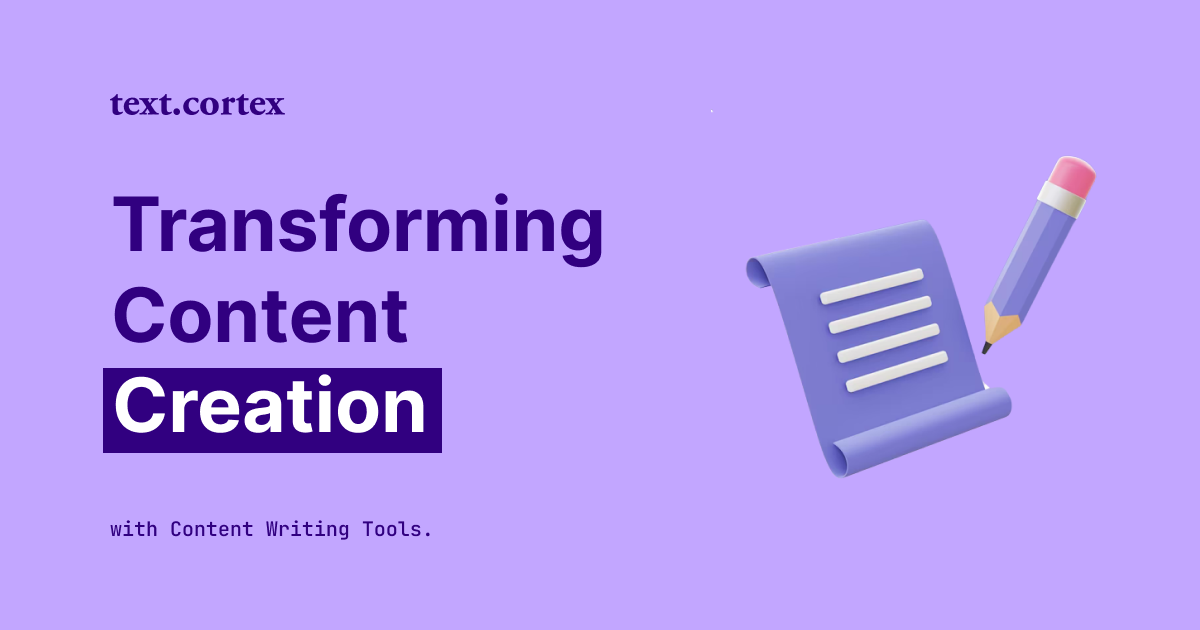Paraphrasing Vs. Summarizing: The Difference And Best Examples
Are you frequently confused about the distinction between paraphrasing and summarizing and their purpose?
Paraphrasing and summarizing text are significant assets in writing that can help you create engaging and efficient content.
And each of these techniques has a different yet vital purpose in the writing process. Unfortunately, people often find it hard to distinguish their differences.
Not to mention that plagiarized and summarized content is allowed and acceptable only if it is not plagiarized in any way.
Thus, today we'll go through the critical distinctions between the paraphrasing and summarizing techniques and when and how to apply each writing strategy utilizing examples of each.
Let's begin!
Paraphrasing vs Summarizing — Definitions
Paraphrasing
Paraphrasing means reading the text and putting it in your own words without changing the meaning of the original text.
This action doesn't allow copy-pasting original text in any way — copy-pasted text is considered plagiarism unless you use it as a citation.
What is the length of the paraphrased text?
The paraphrased version of the text is almost the same length or a little shorter than the original.
When to use paraphrasing?
You can use the paraphrasing writing technique when:
- You want to use someone else's writing for your reference.
- You want to avoid quotations.
- When the idea is more important than writing style.
- When you need to improve the readability of your content.
Here is an example of what original vs paraphrased text looks like:
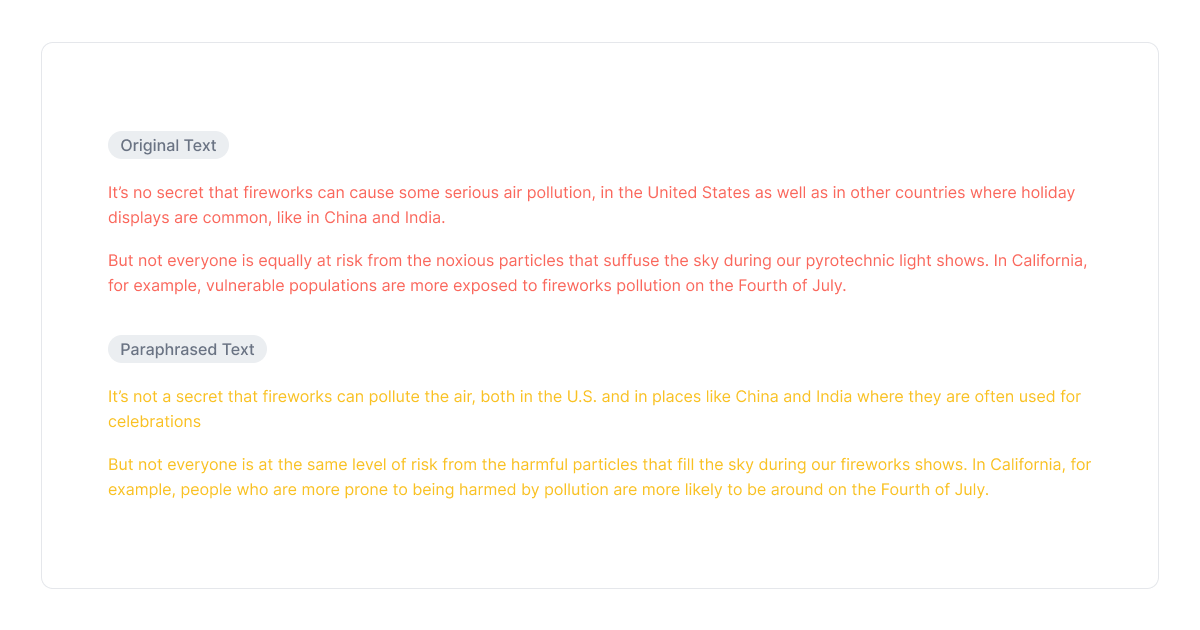
In simple words, paraphrasing is putting someone else's writing in your own words and thoughts.
Summarizing
When you want to get the main idea of a piece of writing, you can use the summarizing technique.
Summarizing is brief information of the original text in your own words that only includes the essential parts.
What is the length of the summarized text?
The summary of the text is a lot shorter than the original. This is because it leaves out the meaning of the text and includes only the main idea or the most critical information.
When to use summarizing?
Here are some tips on when to use the summarizing technique:
- When you need to pick out only the writer's main ideas.
- When you need an overview of the whole piece.
- When you need to simplify the text.
- When only the most important parts of the text need to be discussed.
Here is an example of what original text vs summarized text looks like:
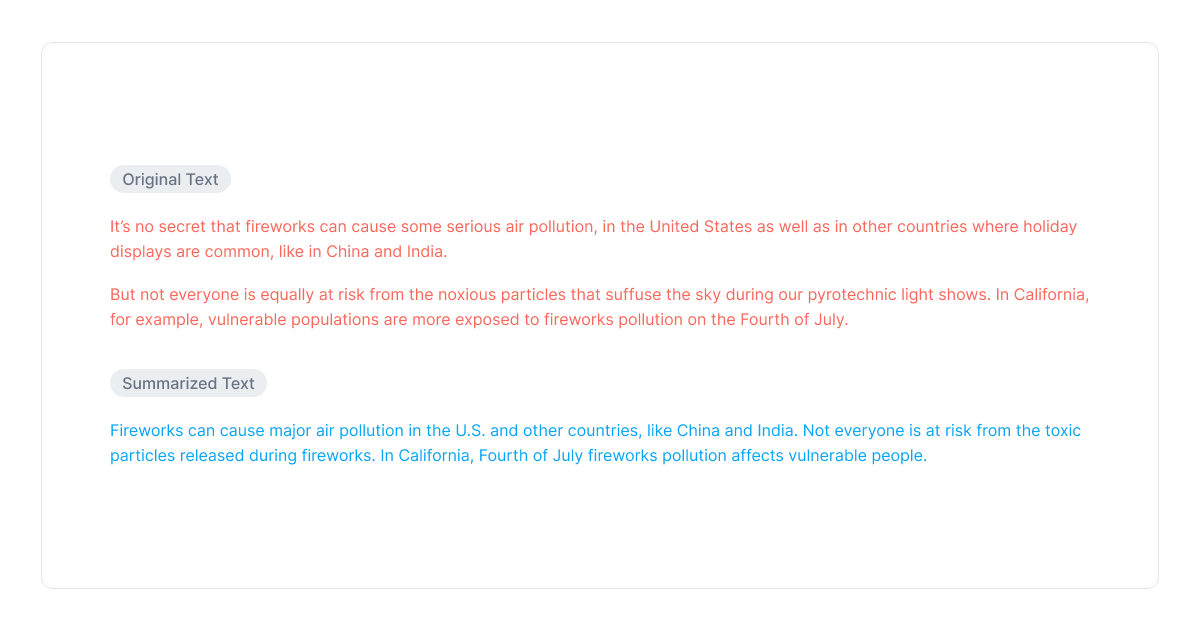
Summarizing involves extracting the original text's main ideas and compressing them into a clear overview.
Now that we know what definitions of each technique are let's discuss paraphrasing vs summarizing differences.
Paraphrasing vs Summarizing — Differences
Here are the 3 primary differences between paraphrasing and summarizing writing techniques:
- Paraphrasing is rewriting a text in your own words while summarizing is writing the most important parts of a piece in your own words.
- Paraphrasing has the same or a little shorter text length than the original one, while summarizing is much more concise than the original.
- You can use paraphrasing to make the original content easier to understand, while summarizing is used to mention only the most important points without any explanation.
Here is what the comparison between paraphrased and summarized text looks like:
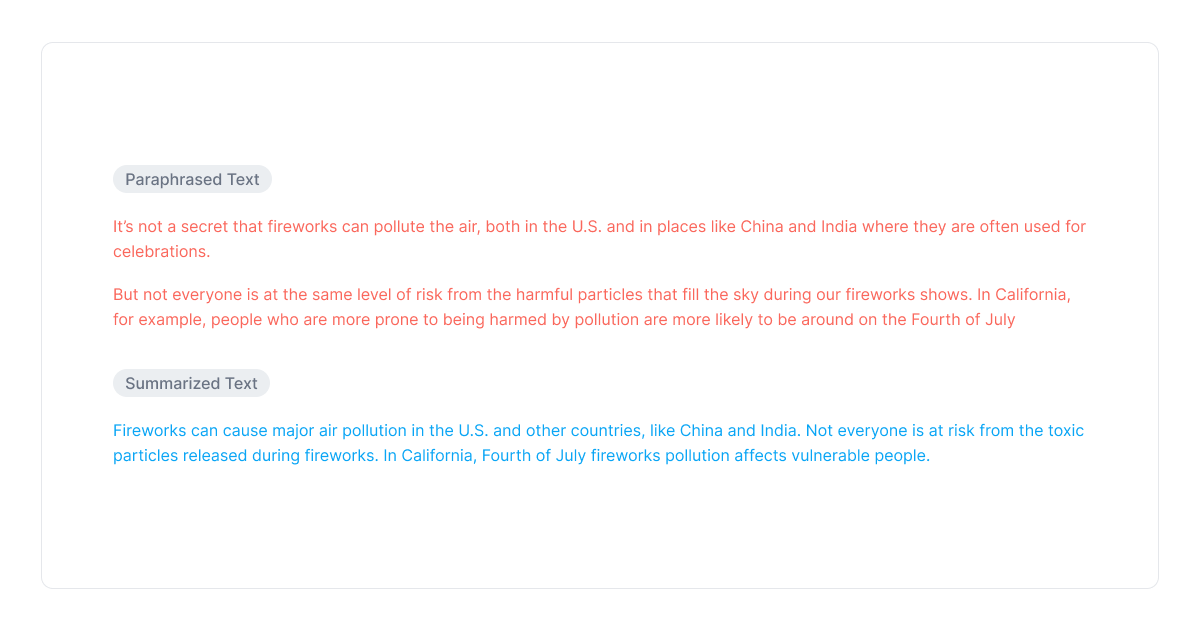
When To Paraphrase and When To Summarize?
When paraphrasing, you put someone else's ideas into your own words.
Let's observe the following statement and possible 3 paraphrasing outcomes.
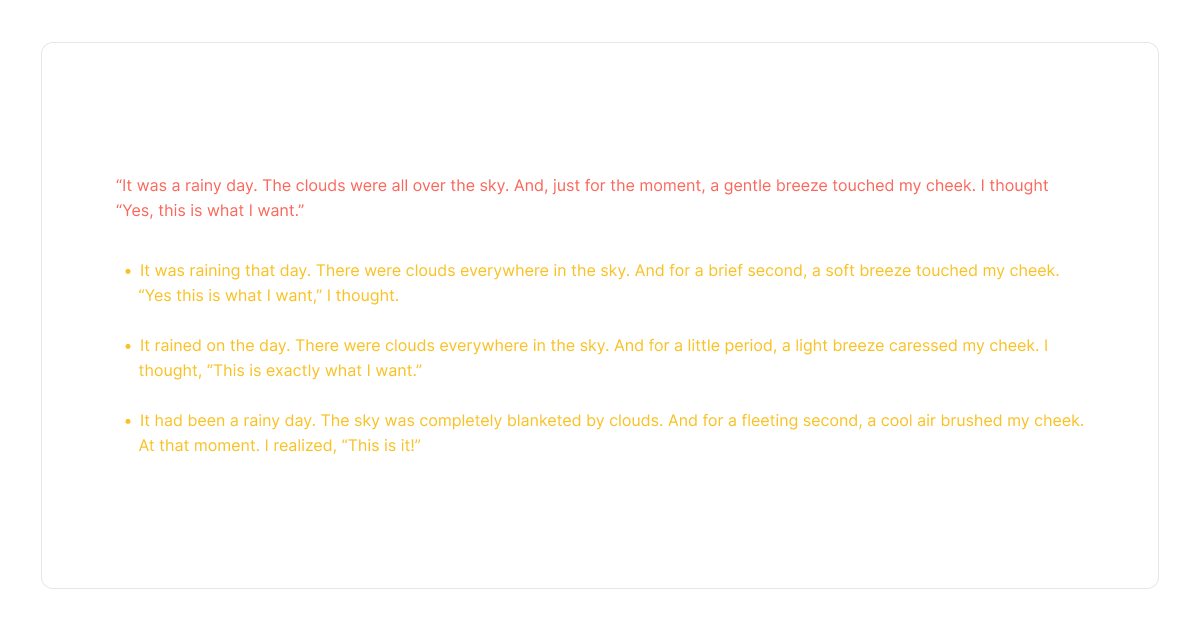
In the example, paraphrasing includes all the details of the original text, the idea, and the impression you want to trigger with your audience, but in your own style.
On the other hand, when you are summarizing, you want to get a shorter version of the original text.
Let’s take a look at the same example.
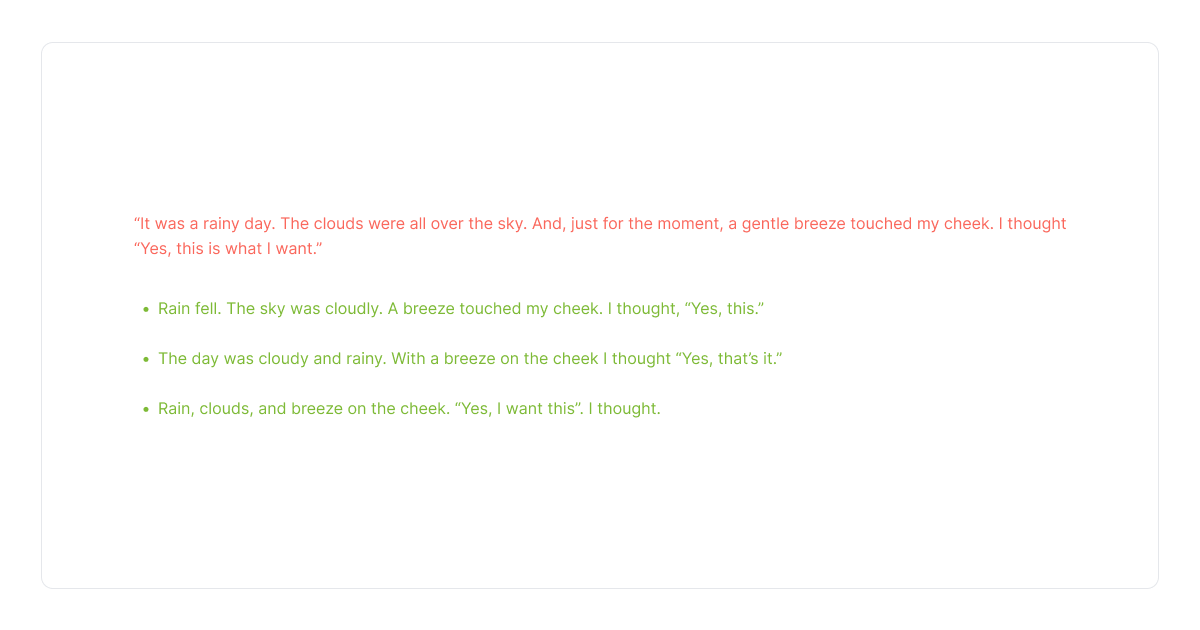
Together quoting, paraphrasing, and summarizing are the leading writing techniques when mentioning sources in your content.
When deciding which to use, you should first think about what kind of content you want to write.
For example, literature reviews and science reports are mostly just summaries. But conversely, all three techniques you can use in argumentative essays.
Even though paraphrasing and summarizing are important, you shouldn't rely on them too much, either. The most important thing is your opinion on the subject.
Let's move on and check the paraphrasing vs summarizing examples.
Paraphrasing vs Summarizing Examples
How To Paraphrase?
When you paraphrase, keep these 3 things in mind:
- You must provide a reference.
- Use your language style when paraphrasing.
- Changing just a few words here and there is not paraphrasing.
The lack of paraphrasing words is just a lack of synonyms, nothing more. It has nothing to do with creativity.
Think about how the ideas fit with what you already know. Then, try some of the following tips to paraphrase with ease:
- Take notes of the original text — Pull the most critical details from the storyline you need to paraphrase.

- Make full sentences from ideas — Create words around those key points in your own style.
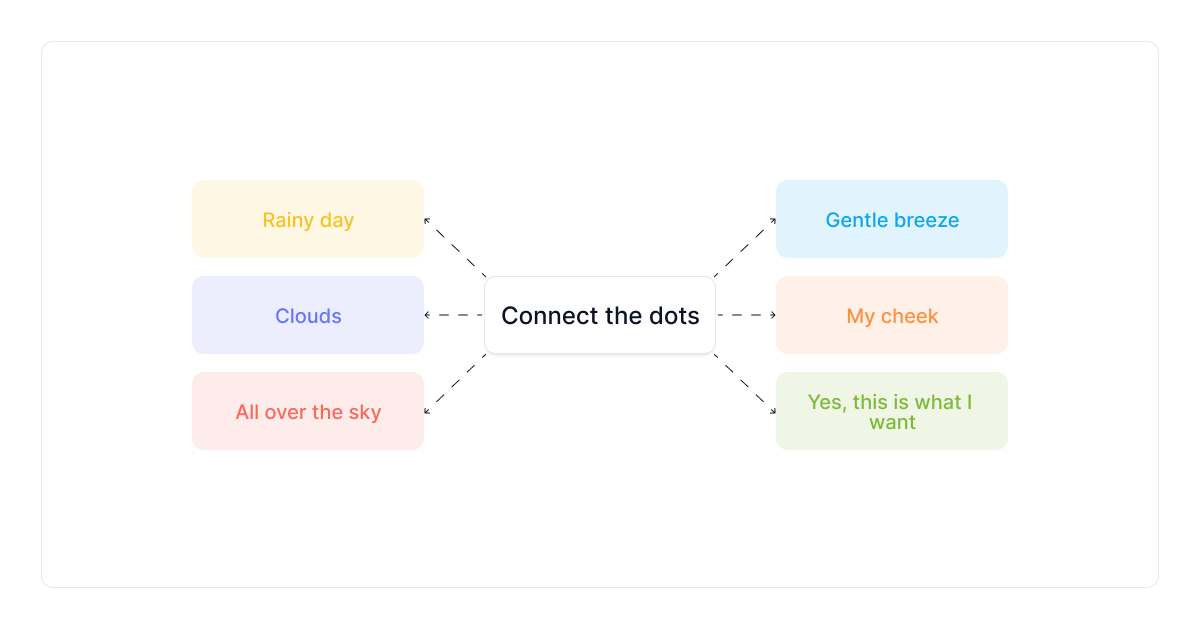
- Provide a reference — If you have statistical or research data, mention the author or the literature you used for your statement.
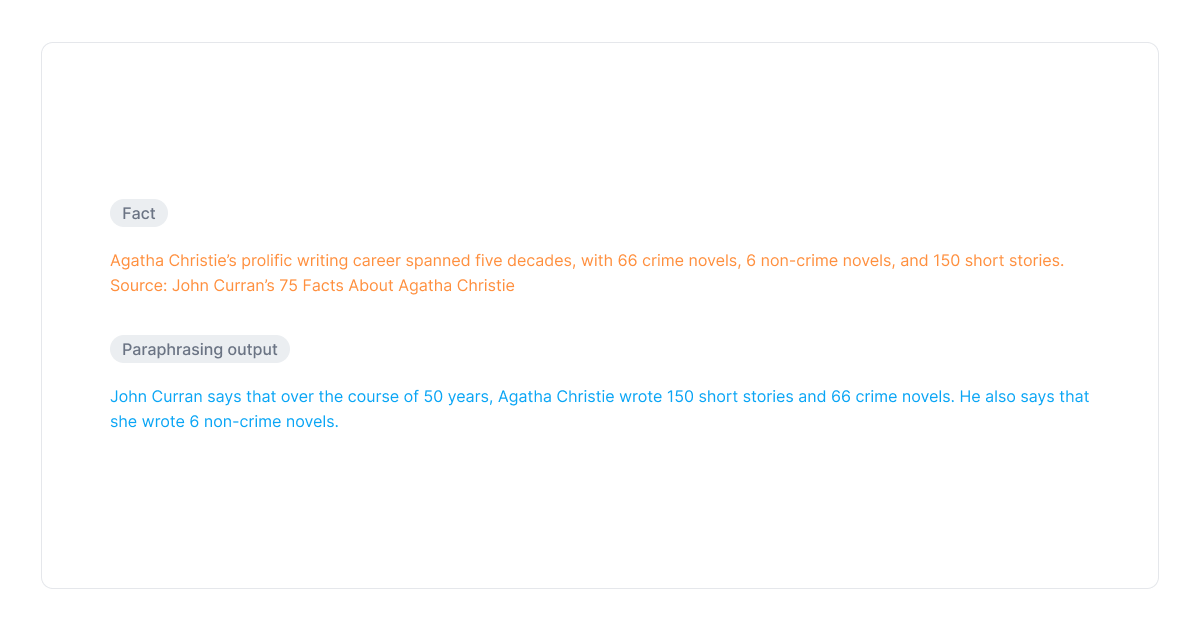
- Analyze — The paraphrasing outcome will be more authentic and genuine by providing feedback, expressing your thoughts, or adding your own ideas.

- Not every word needs to be changed — Keep the most important words the same for clarity's sake (e.g., autism, culture, children). But don't use whole phrases unless they are common in your field (e.g., psychogenic disorder).
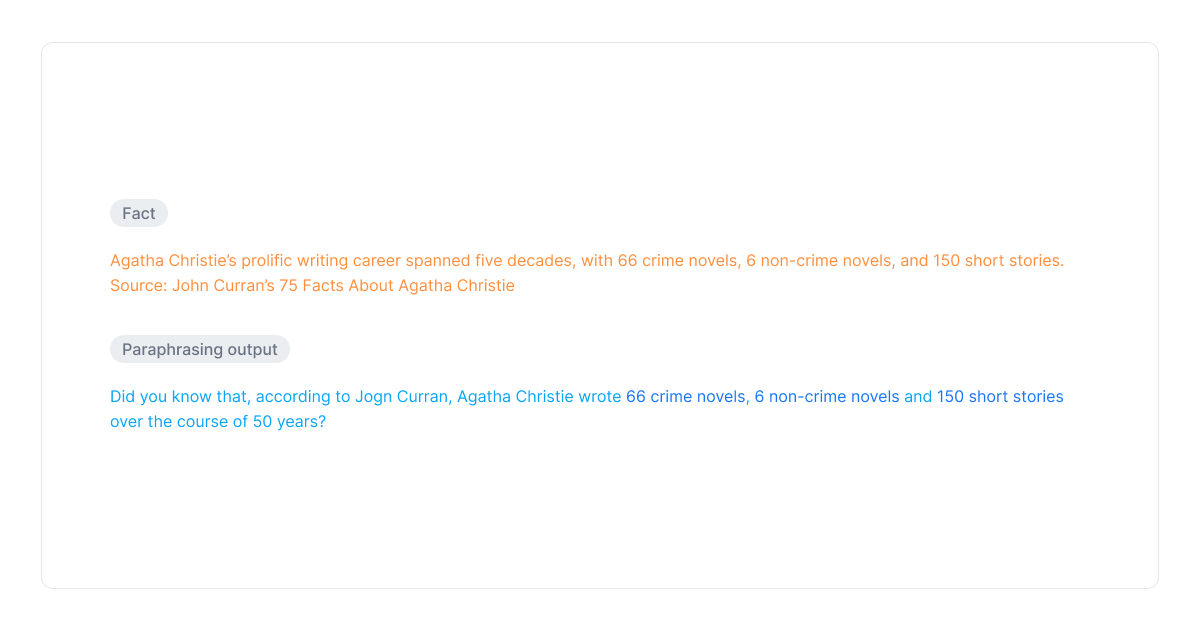
Pro Tip: Nowadays, it is not so uncommon for writers to utilize paraphrasing tools such as TextCortex.
Part of the reason is that paraphrasing tools help overcome writer’s block and boost creativity.
For instance, to paraphrase sentences or entire paragraphs with TextCortex, you must select the text you want to rewrite, click on the logo, and click on the ‘Paraphrase’ feature.
You can paraphrase the original output multiple times until you get the desired output. Additionally, TextCortex will provide you with several different paraphrasing variants for each generation.
How To Summarize?
The summary goes a lot further than a point-by-point paraphrasing.
And to help you understand better, we will be using the following part of the article “Fairytales much older than previously thought, say researchers”:
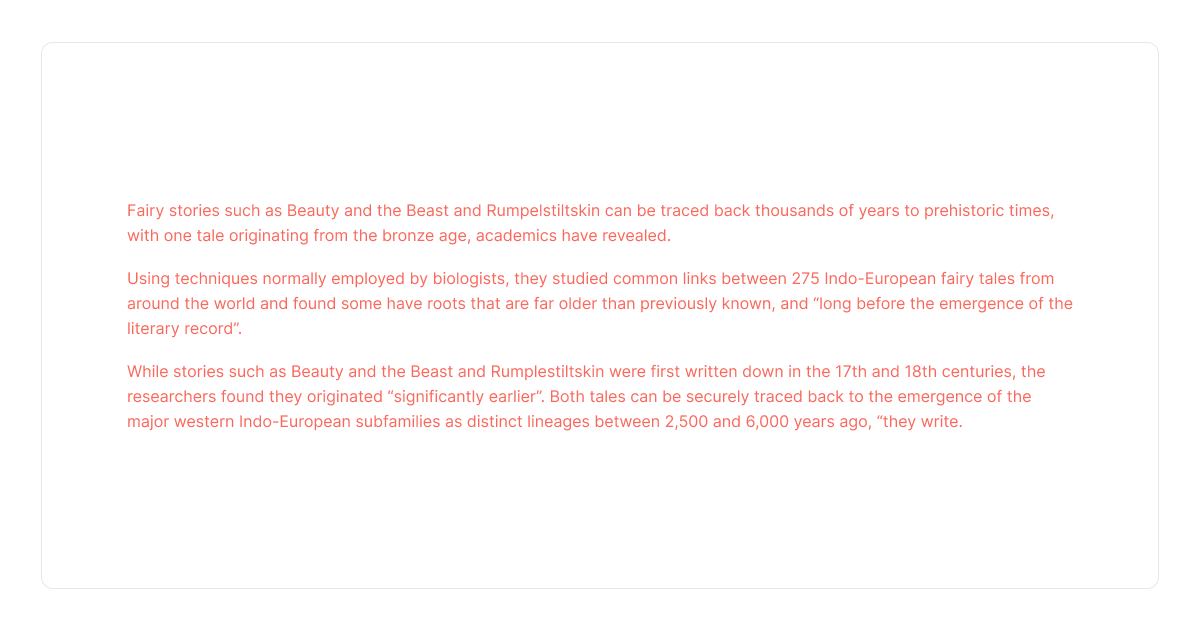
When you want to summarize the text, you need to:
- Understand the context — Get the overall idea of the text you want to transform into a shorter version of the text. In the given example, the text talks about fairytales that have been around since the Bronze Age and when and where this information comes from.
- Pull out primary takeaways — Gather all relevant key points of the text and add a piece of brief information about them.

- Create a storytelling brief — It is not enough just to list the key elements. Instead, use storytelling techniques to transform the main takeaways into a compelling but short version of the original text.

- A summary has to be shorter than the original text— The summary includes only essential points of the text, not the details.
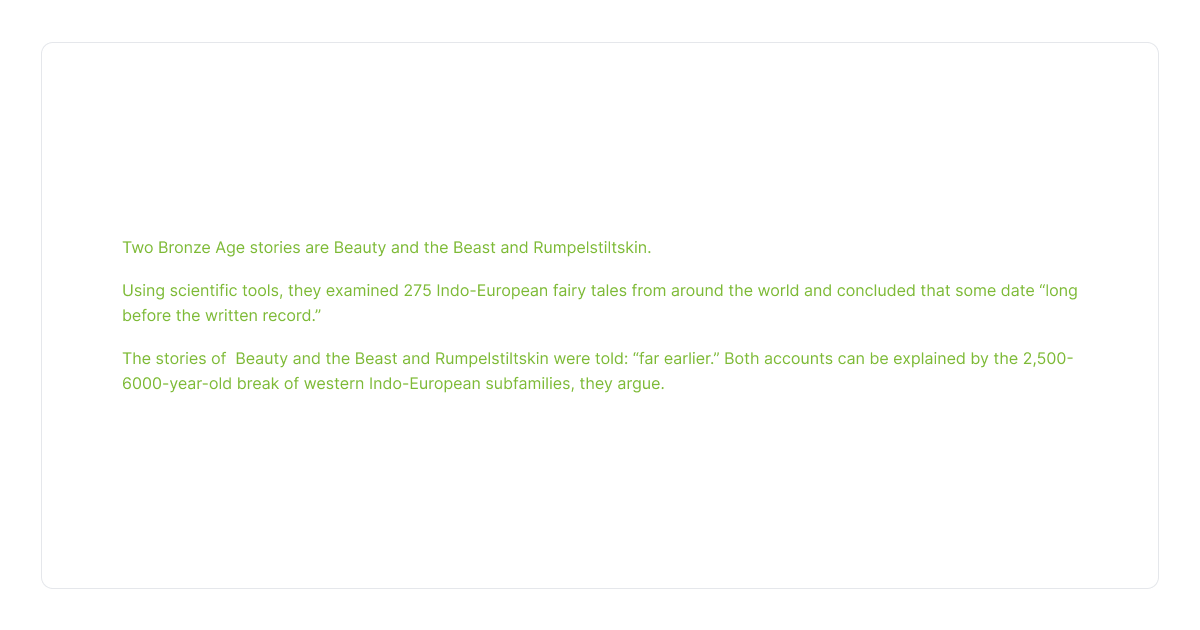
Most people get confused when comparing paraphrasing and summarizing because those two writing techniques don’t exclude each other.
In simple words, a summary of the text can be paraphrased, and vice versa.
Final Thoughts
As you can notice, paraphrasing and summarizing techniques are not as hard as they seem. And you probably use both in your regular conversations every day.
However, it becomes more official when it comes to writing articles, essays, and more.
This is due to plagiarism rules — content labeled as plagiarism can be heavily penalized and damage your writing career before it even starts to blossom.
And if you are planning to become a writer or are a newbie that is not so confident in these writing techniques, we suggest you start utilizing the TextCortex rewriting extension.
Our Chrome extension can help you:
- Manage your writing faster.
- Produce more content in less time.
- Rewrite sentences and paragraphs in bulk.
- Transform bullets to emails.
- Expand your text for more information.
- Write blog posts from a single sentence.
- Assist you on more than 30 platforms.
In addition, with the Chrome rewriting extension, you will gain access to the TextCortex web application that can help you to write:
- Blog articles,
- Product descriptions,
- Emails,
- Ads,
- Social media posts
- Youtube captions,
- And more in 72+ languages.
Are you ready to start paraphrasing with ease?
Claim your free account today to get 15 daily creations to explore all TextCortex’s features without limitations. No credit card information is required.

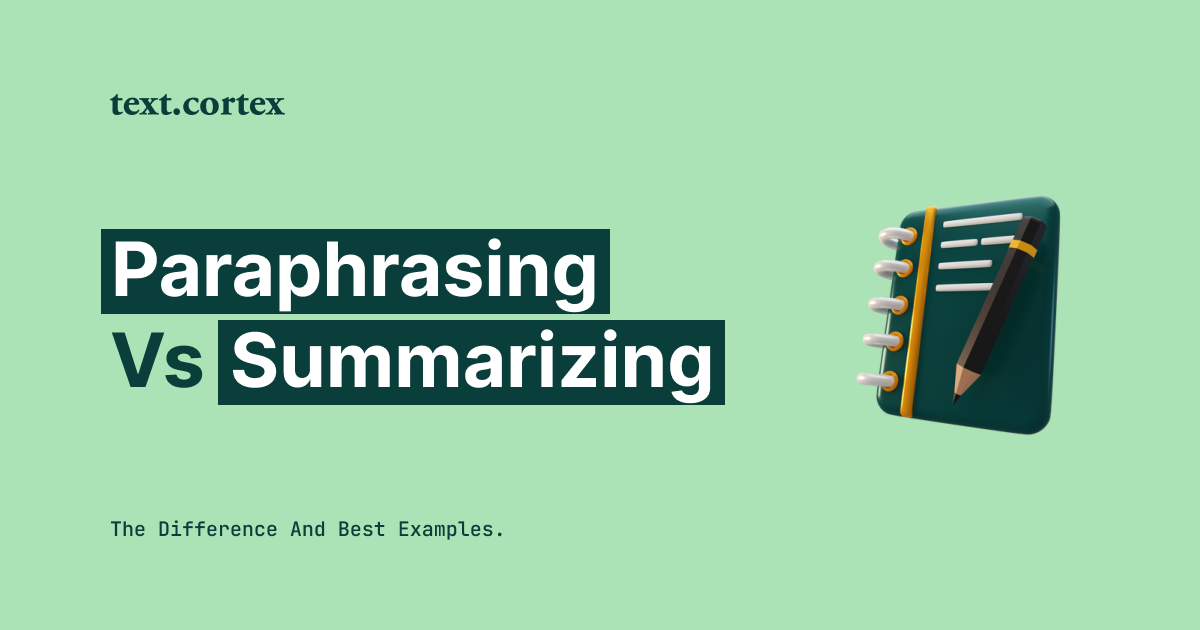
.jpg)
